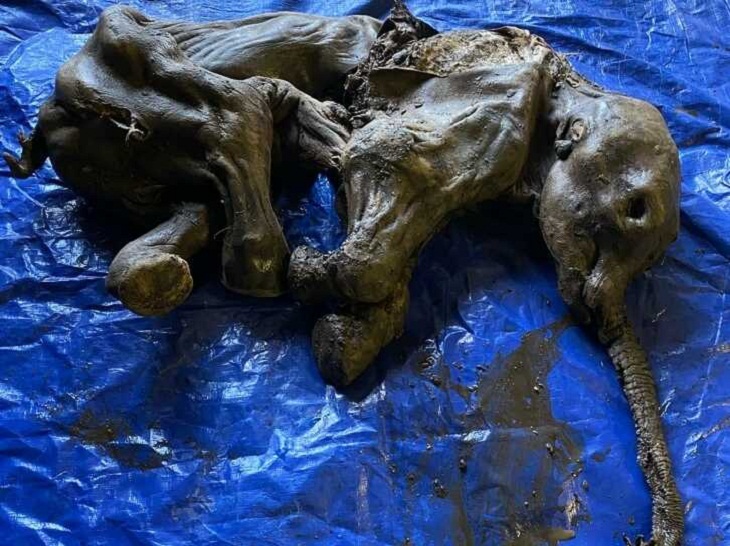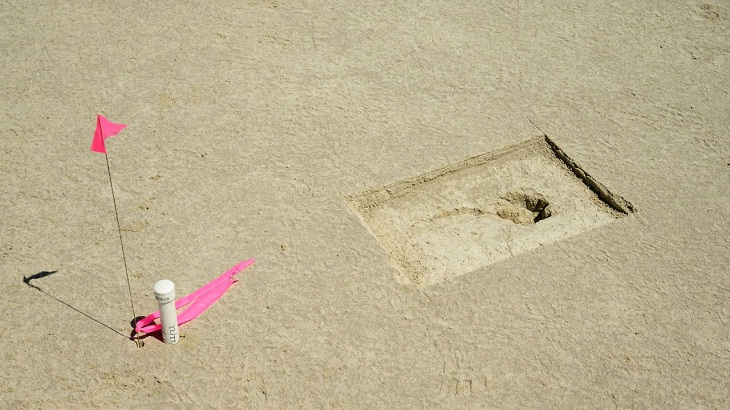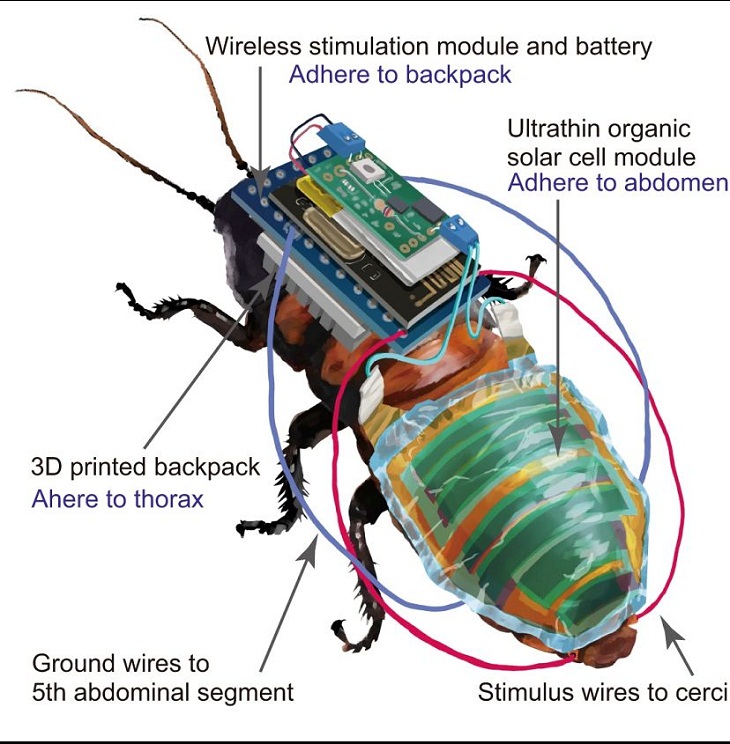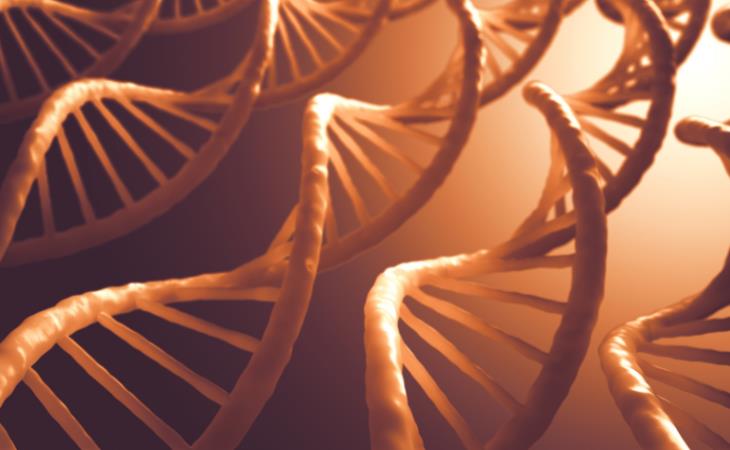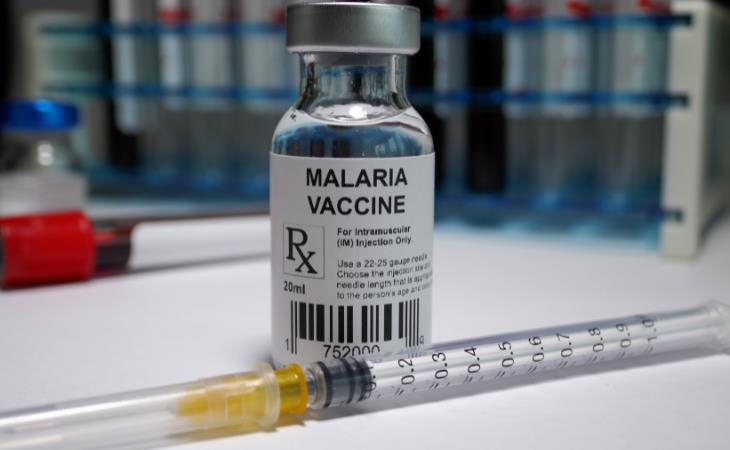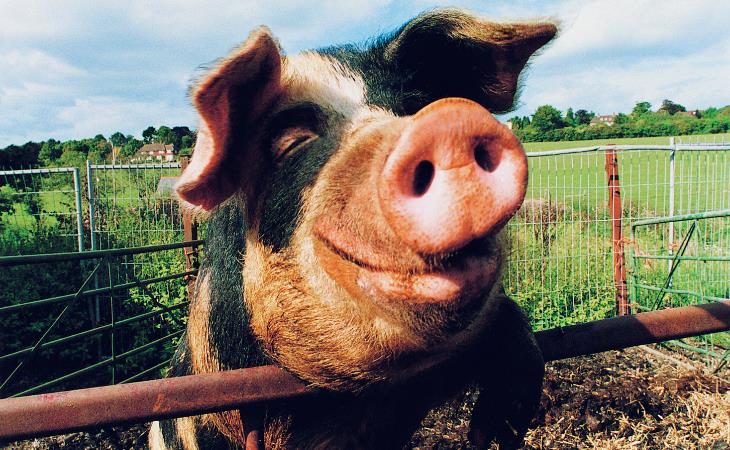In July, NASA’s James Webb Telescope released a series of images that revealed the most detailed view of the universe ever. One of the photos, which looked like a blurry cherry destemmed, captured a red blot of light supposedly 13.5 billion years old. This means what you’re looking at above is the oldest snapshot of the infant universe.
Scientists believe that such unprecedented photos could pave the way for many new discoveries in astronomy. Our researchers might be able to decode the beginning of the universe with the help of these infrared images, learning what happened during the Big Bang or just afterward.
“Webb can see backwards in time just after the Big Bang by looking for galaxies that are so far away, the light has taken many billions of years to get from those galaxies to ourselves,” said Jonathan Gardner, deputy senior project scientist at NASA to the press. “Webb is bigger than Hubble so that it can see fainter galaxies that are further away.”
2. 30,000-year-old baby woolly mammoth discovered
In an astonishing discovery, a gold miner found an almost perfectly preserved mummified baby mammoth in Canada's Yukon territory. According to a press release from the local government, the female baby mammoth is 30,000 years old and was found with intact hair, toenails, skin, and tusks. Geologists from the Yukon Geological Survey and the University of Calgary believe the baby mammoth likely died in permafrost during the Ice Age. Mammoths would also have encountered wild horses, cave lions, and giant steppe bison in the Yukon region during this time, the researchers said.
Experts say this is the best-preserved woolly mammoth ever found in North America. Before this, the partial remains of an infant mammoth were discovered on the continent in 1948.
3. The world’s largest freshwater fish found
A Cambodian fisherman accidentally caught a giant freshwater stingray (Urogymnus polylepis) on the Mekong River. Measuring a remarkable 3.98m (13ft) in length (tail included) and 2.2m (7.2ft) in width, it claimed the title of the largest freshwater fish in the world. Furthermore, the female stingray weighed an astonishing 300 kg (661.3lb). That’s roughly how much an adult grizzly weighs! The previous record for the largest freshwater fish in the world was held by a Mekong giant catfish (Pangasianodon gigas), which measured 2.7m (8.8ft) from head to tail, and weighed 293kg (646lb).
The giant freshwater stingray is an endangered species that’s found in large rivers and estuaries in Southeast Asia and Borneo.
4. Human footprints from the Ice Age discovered in the US
Scientists have found 88 fossilized prints belonging to adults and children dating back 12,000 years in Utah. These are just the second set of human tracks from the Ice Age to be identified in the United States.
Paleoanthropologists believe footprints record evidence that cannot be found in any other type of archaeological or fossil site. These sets of footprints indicate that humans occupied North America during the Pleistocene era, or Ice Age, around 7,500 years earlier than previously thought. The researchers would now need to preserve these footprints and determine who exactly they belong to.
5. New US drug trial eliminates cancer in 100% of patients
Scientists have been trying to find a cure for cancer for decades, but with only limited success. A small trial, however, has raised hopes that we may finally rid the world of this dreaded disease. In a trial with 18 rectal-cancer patients who were prescribed novel immunotherapy, scientists found that cancer vanished in every single patient.
According to a study published in the New England Journal of Medicine, a drug named Dostarlimab was given to each of the patients for around six months. At the end of the six-month trial, each of their tumors disappeared. What’s more incredible is that none of the patients showed any signs of recurrence of cancer even after 25 months from the end of the trial. The scientists involved in the study say that the patients won’t need any further treatment.
“I believe this is the first time this has happened in the history of cancer,” Luis Diaz Jr., a doctor at Memorial Sloan Kettering Cancer Center was quoted as saying.
Dostarlimab contains laboratory-produced molecules that function as substitute antibodies in the human body. To understand whether the cancers are truly in remission, cancer researchers say a large-scale trial and long-term monitoring of patients are needed. They do, however, say that it holds promise and offers hope that cancer patients won’t have to undergo painful chemotherapy and radiation sessions after treatment.
6. Lab-grown human brain cells in a dish play video game
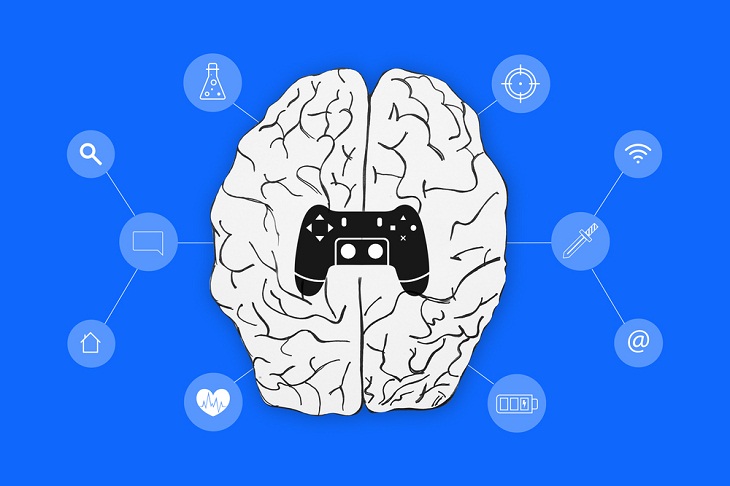
Yes, you read that right. Australian neuroscientists have grown brain cells in a lab that have learned to play the classic video game, Pong. More importantly, they could be capable of "intelligent and sentient behavior." Dr. Brett Kagan, who led a study published in the journal Neuron, said that the "mini-brains" they created could sense and respond to their environment.
For the test, scientists developed 800,000 human brain cells from stem cells and mouse embryos into a miniature brain. Then, they used electrodes to link this little brain to the video game, showing which side the ball was on and how far away from the paddle it was. Upon viewing the video game, the cells began producing electrical activity of their own. The scientists, meanwhile, gave the cells feedback on whether they were hitting the ball or not.
The mini-brain learned to play in five minutes. It fired back signals to move the paddle in an opponent-free version of the game. It missed the paddle a few times, but the success rate was higher than chance.
The study authors stress that the mini-brain has no consciousness and hence doesn’t know it is playing Pong in the way a human player would.
For the next stage of the study, the researchers will find out what happens when their mini-brain is affected by medicines and alcohol.
7. USDA approves genetically-modified purple tomato

A genetically modified purple tomato received regulatory approval from the U.S. Department of Agriculture recently. The tomato was developed by a team of scientists at Norfolk Plant Sciences who spent almost 15 years working on it.
While there are other tomatoes with purple skins, Norfolk's vividly colored tomato has higher concentrations of anthocyanins, the antioxidant-rich chemicals that give blackberries and blueberries their distinctive colors.
The team stimulated the tomatoes to produce more anthocyanins, which contributed to the brilliant purple hue, by using transcription factors from snapdragons.
"Domesticated tomatoes already have genes to produce anthocyanins, but they are not 'turned on' in most fruits," BigPurpleTomato.com explains. "By carefully adding two genes from snapdragons that work like 'on switches,' our tomatoes and juice are a rich source of antioxidants because purple pigments are made in the whole tomato, not just the skins."
Scientists from Norfolk Plant Sciences claim that their tomato is rich in antioxidants and has double the shelf life of its red cousins.
8. A remote-controlled cyborg cockroach for search and rescue
Remote-controlled cockroach robots could soon be saving lives! No, this isn’t the story of the next Hollywood sci-fi blockbuster. Researchers at RIKEN in Japan have engineered a system for creating remote-controlled cyborg cockroaches wearing a tiny backpack of solar cells and electronic hardware, which acts as a wireless control module. This setup would allow the insects to explore dangerous ruins and follow commands from remote controllers to find survivors trapped under debris or stone.
The researchers first developed an ultrathin 0.004-mm-thick organic solar cell module and mounted it on the dorsal side of the cockroach’s abdomen. Solar cells on its body provide power to the controller and guide it in the right direction as it moves around. Since they are built from lightweight materials, the cyborg cockroaches can move freely over different types of terrain.
The researchers chose Madagascar cockroaches as subjects - they are almost 2.5 inches long, are wingless, and can turn themselves over after falling on their backs.
9. Guinness World Record for the fastest DNA sequencing technique
A Stanford University-led research team was presented with Guinness World Records for the fastest DNA sequencing technique earlier this year. Scientists from Stanford Medicine developed a new 5-hour genome sequencing technique that will allow healthcare professionals to take a blood draw from a critical-care patient and reach a genetic disorder diagnosis the same day.
The path-breaking study behind the world record was led by Dr. Euan Ashley, professor of medicine of genetics and of biomedical data science at the Stanford School of Medicine. A paper about the team’s work that was published in the New England Journal of Medicine describes how they sequenced a patient’s entire genome. They also provided a diagnosis in just seven hours and 18 minutes. The sequencing portion of the analysis took five hours and two minutes.
Ashley and his research team achieved the feat by using a special machine built by Oxford Nanopore Technologies that contains 48 sequencing units, also known as flow cells. The machine helped the scientists to sequence one person’s genome using all flow cells at the same time, channeling the subsequent charge of genomic data into a cloud-based storage system. As a result, computational power could be amplified and data could be screened in real-time while algorithms worked independently to detect errors in the genetic code that might cause disease. The research team then performed their own analysis to compare a patient’s gene variants to those known to cause disease.
The team says that the genome sequencing time can be brought down even further. “I think we can halve it again. If we’re able to do that, we’re talking about being able to get an answer before the end of a hospital ward round. That’s a dramatic jump,” said Ashley.
10. First plants grown in lunar soil
Humans may soon be farming on the moon. Scientists at the University of Florida successfully grew plants in soil from the moon in May of this year – a first in human history. For the experiment, researchers from the University of Florida used 12 grams of lunar soil collected from various spots on the Moon during the Apollo 11, 12, and 17 missions.
To grow their lunar garden, the researchers placed about a gram of soil in tiny pots and added water followed by seeds of Arabidopsis thaliana - a plant related to mustard greens. Next, they moistened the soil with a nutrient solution.
Interestingly, while all the lunar plants sprouted, the team started noticing differences between the plants grown in lunar soil and the control group. For starters, the ones that grew in lunar soil did not become as "robust" as those in the control. In addition, some of the plants grown in lunar soil samples had "stunted" roots and leaves with some "reddish pigmentation." The scientists believe these are all signs that the plants were able to cope with the moon's soil's chemical and structural composition. Their theory was confirmed when they analyzed the plants’ gene expression patterns, which revealed that the lunar plants had reacted similarly to those cultivated in harsh environments.
The next step for the team is to know if materials from different areas of the Moon are more favorable to growing plants than others.
11. New anti-malaria vaccine shows promise
Malaria kills more than 400,000 people each year, mostly children. The disease is caused by Plasmodium parasites, which have so far dodged several vaccine attempts. However, in September this year, Oxford University scientists announced that their newly developed anti-malaria vaccine had been found to be extremely effective.
Trial results from 409 children in Nanoro, Burkina Faso, published in Lancet Infectious Diseases, showed that three initial doses of the vaccine followed by a booster a year later provided up to 80% protection.
The vaccine – called R21 – has been developed by the Jenner Institute at the University of Oxford. It has been made using a combination of proteins from the malaria parasite and the hepatitis B virus. The vaccine targets the parasite during the first stage of its lifecycle by intercepting it before it enters the liver. Crucially, it’s cheap to produce, costing only a few dollars per treatment.
Prof. Adrian Hill, director of the Jenner Institute at the university, hopes that the vaccine will be available soon and save lives by the end of next year.
12. New evidence suggests spiders can dream
Scientists have found evidence that when spiders sleep, they might not just be resting, but even dreaming. Daniela Roessler, an ecologist at the University of Konstanz, along with her colleagues, recorded baby jumping spiders (Evarcha arcuata) with infrared cameras overnight.
These small arachnids sleep upside down dangling from a silk strand. The researchers noticed that the spiders sometimes had their legs curled and would occasionally twitch. Additionally, the videos showed that their retinal tubules (components of their lidless eyes) shifted rapidly. This could suggest that jumping spiders could be exhibiting a “REM (rapid-eye-movement) sleep-like state”, the researchers claimed in their study published in the journal Proceedings of the National Academy of Sciences of the United States of America (PNAS). Every 15 to 20 minutes, REM sleep would occur for around 90 seconds at a time.
During REM, the eyes move rapidly while closed. The bodies of young spiders are nearly transparent, making it easier to determine the movements of their retinal tubules. Dreams are thought to be reflected in rapid eye movements during sleep.
The researchers of the study said it was the first time that scientists had observed REM sleep in animals without a backbone or spine. They do believe that the spiders were dreaming but proving that scientifically will require many more complex experiments.
13. Scientists revive pig’s organs hours after death
Scientists at Yale University brought pig organs back to life, literally! The peer-reviewed findings, published in the journal Nature, revealed that the team of researchers used a technology called OrganEx on pigs one hour after they no longer had a pulse as part of an experiment. The system consists of a device similar to the heart-lung machines used in surgeries, as well as a cocktail of 13 compounds that promote cellular health.
The pigs' hearts, livers, and kidneys were examined after six hours and revealed that some of their functions had been partially recovered. There was a restoration of electrical activity in the heart, and some heart muscle cells were capable of contracting, although organ function was not as high as before death. Amazingly, the pigs' heads and necks started briefly moving on their own, showing signs of regaining some motor function.
A lot more research will be needed before we can adapt the technology to be used on humans. However, these findings seem to suggest that we can actually initiate cell repair on a molecular level and persuade cells not to die. If successful, the technology may help extend the health of human organs during surgery and expand the availability of donor organs, the authors said.
Share this post with all your friends and family!


